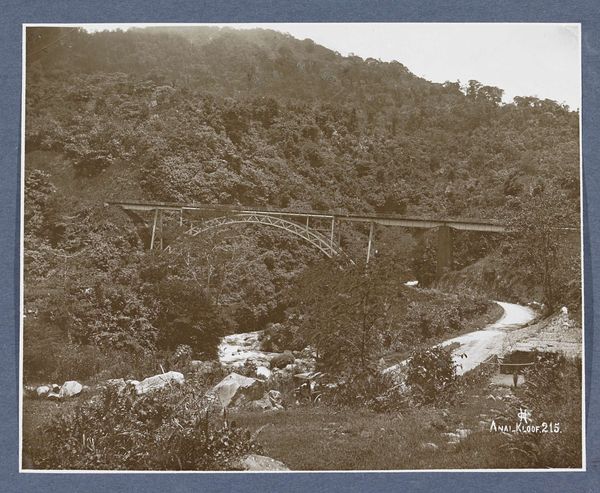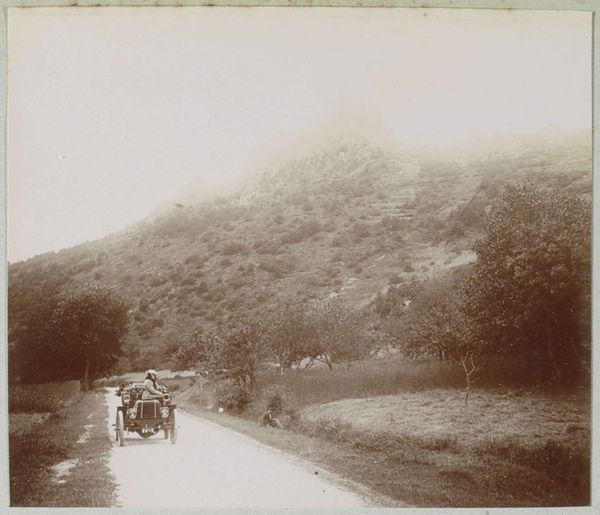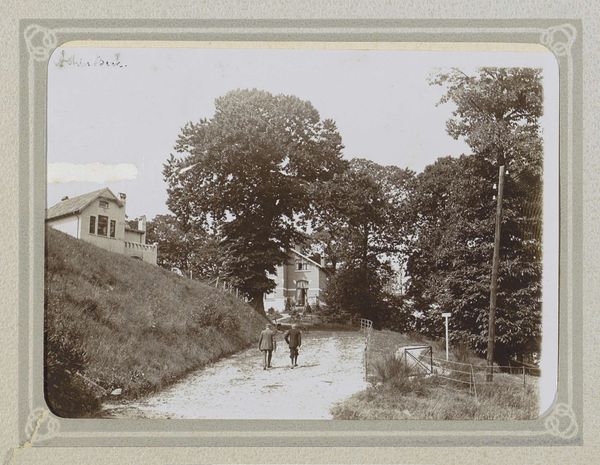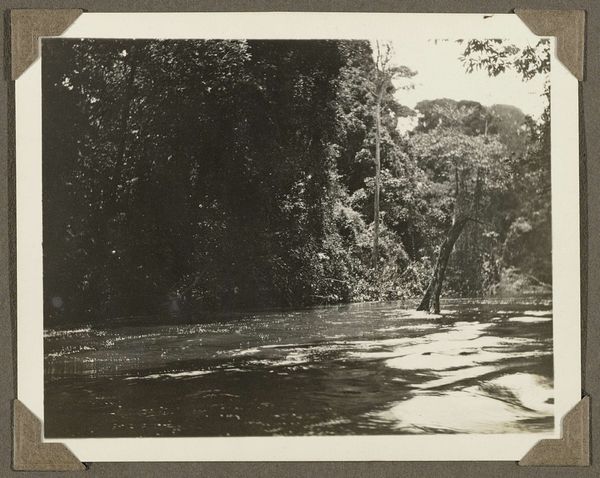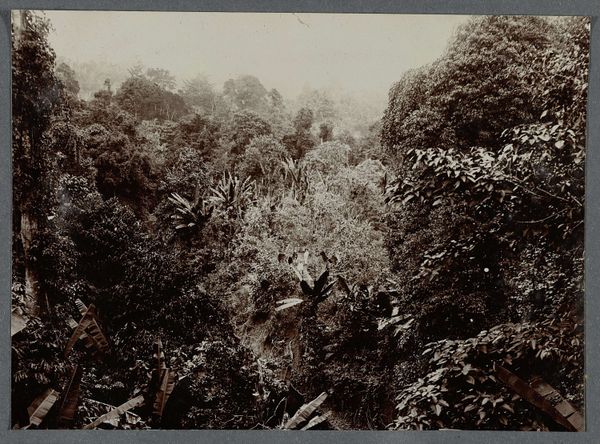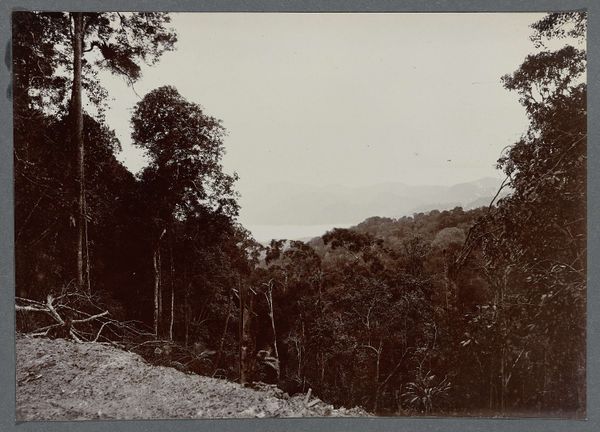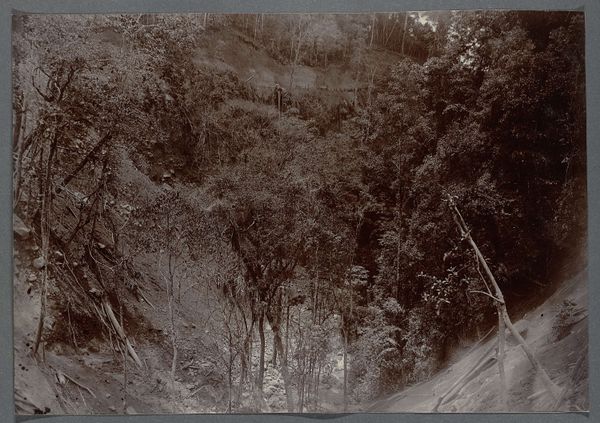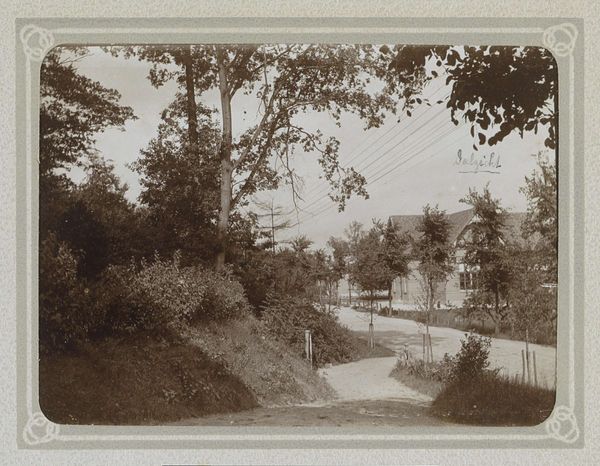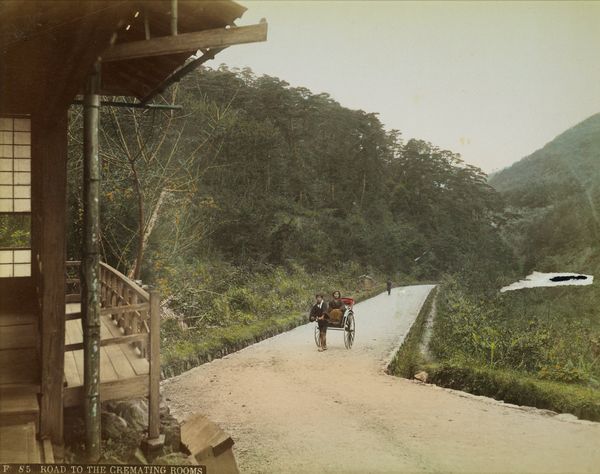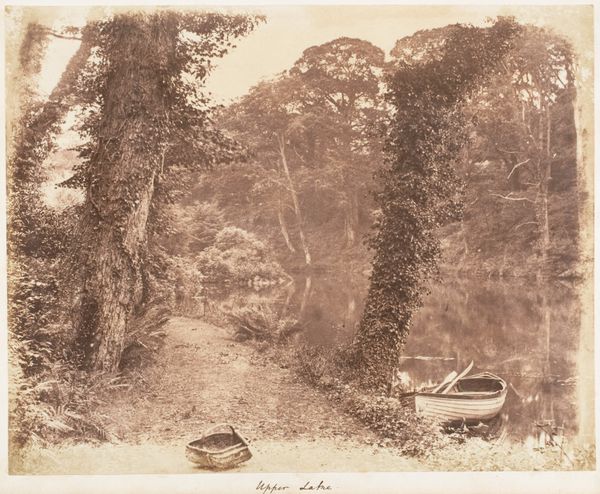
Mannen bij een rijtuig op Sumatra, op de achtergrond Karbouwengat c. 1900 - 1920
0:00
0:00
christiaanbenjaminnieuwenhuis
Rijksmuseum
photography
#
landscape
#
photography
#
orientalism
#
realism
Dimensions: height 221 mm, width 287 mm
Copyright: Rijks Museum: Open Domain
Curator: Welcome. We’re standing before Christiaan Benjamin Nieuwenhuis’s photograph, "Mannen bij een rijtuig op Sumatra, op de achtergrond Karbouwengat," which translates to "Men with a Carriage on Sumatra, with Karbouwengat in the Background." It was likely taken between 1900 and 1920. Editor: My first impression is of stillness and heat. There's an incredible lushness implied, despite the monochromatic palette. You can almost feel the humidity radiating from the image. Curator: It's a powerful example of landscape photography, but also reflects elements of orientalism, a lens through which the West viewed and represented the East. Notice the positioning of the figures – they become almost part of the landscape. Editor: Exactly. This image performs the act of framing; of turning people and places into a consumable image for Western eyes. Who are those figures, and what is their story, beyond just being 'picturesque'? Curator: That’s the inherent tension isn’t it? The photograph, as an object, embodies a specific socio-political context – colonialism. We have the presence of the carriage, suggesting European presence and transportation. Editor: And the name itself, "Karbouwengat" which sounds so exotic, almost mythological. It essentializes the place, making it into a far-away fantasy. It makes me question the relationship between photographer, subject, and viewer. Curator: I find it significant that Nieuwenhuis, who was Dutch, chose this specific composition. It points to how the landscape and its inhabitants were perceived and, in many ways, controlled during that era. Editor: Photography can offer "truth" and yet simultaneously distort history so drastically, and the indigenous voices of the location get muted within its beauty. It asks us to contemplate not just what we are seeing, but the power dynamics inherent in seeing. Curator: It underscores the complex role of photography within colonial projects – documenting, but also constructing a particular narrative that supported colonial power. Editor: Looking at this image has made me reflect on how seemingly objective visual records can also be powerful tools of representation and, often, misrepresentation. Curator: Indeed. The beauty of the image belies the underlying socio-political realities of the time, prompting us to delve deeper into its context.
Comments
No comments
Be the first to comment and join the conversation on the ultimate creative platform.
